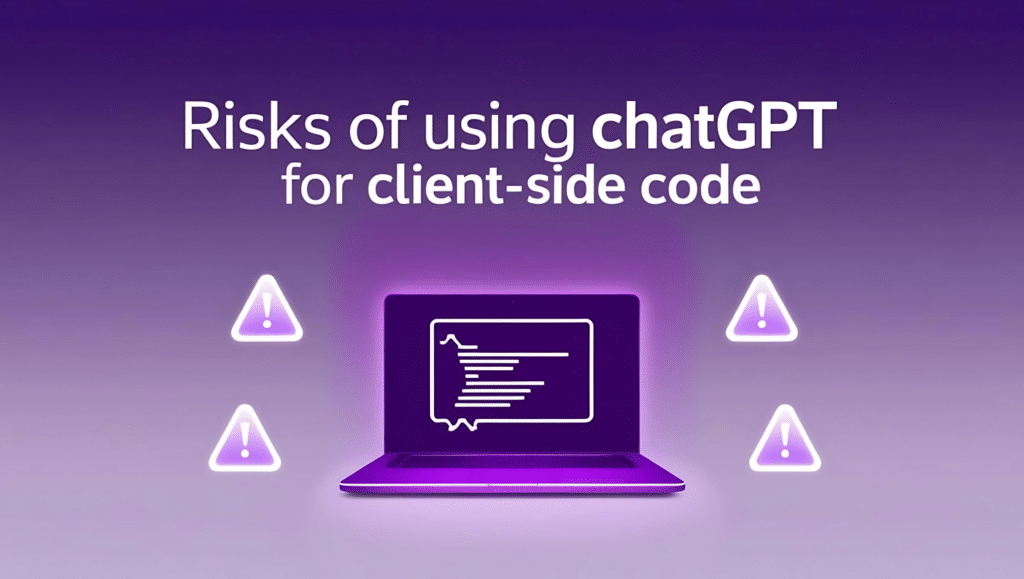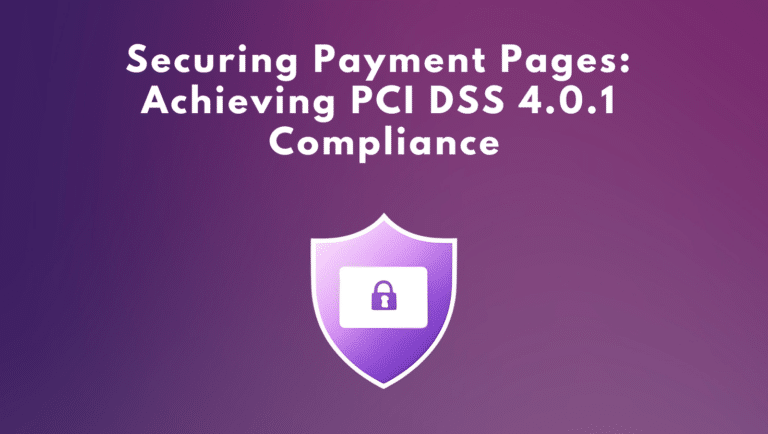Since OpenAI released its AI chatbot software ChatGPT in November of 2022, people from all over the internet have been vocal about this program recently. Whether you love this software or despise it, the bottom line on it seems to be that the technology behind ChapGPT isn’t going anywhere. At least not in the near-to-distant future, it seems. Those who have been curious can try out this enhanced conversational AI software, have found that their results are often varied when using ChatGPT.
However, some professionals in the tech industry have utilized it to help with writing code for them. While this may seem like a good idea to help already overwhelmed teams write code more efficiently, there have been some issues that have resulted from using this software specifically to create code. In this post, we’ll cover what to watch with this technology, along with 4 of the main risks that come with using AI software such as ChatGPT to write client-side code.
The Framework Behind Software Like ChatGPT
Before diving into the risks of using ChatGPT to write code, it’s important to provide the context behind what this type of software is and how it works. OpenAI, in collaboration with deep learning and model processing program called Ray, runs the ChatGPT software. By using open-source unified computing, this program is a generative AI software that is designed to be a conservational AI service such as a chatbot.
The more recent version of this AI software is the latest language model from their GPT-3 series. This type of AI software uses natural language progression (NLP), dialogue generation, personalization GPT-3, and multi-lingual support. With this combination, the AI software utilizes search engine results pages (SERPS) to produce a chatbot type of result to write text. However, this software can be used to write code by using code generation, code completion, debugging, learning, and providing recommendations.
As seen in the screenshot above, ChatGPT explained how this AI aids with code snippets for programming solution samples for users. The technology for this type of AI programming can be beneficial for aiding in solving coding and programming issues. However, even ChatGPT states in generated response that it should be used as guidance more so than a replacement for writing client-side code.

3 Key Risks of Using ChatGPT to Write Client-side Code
When using these AI programs, it’s important to understand that there may be a level of risk when using open-source tools such as ChatGPT. The following are the 4 common client-side security risks that users may find as a concern when using ChatGPT or other related AI generation programs to write code.
Risk #1 – Data Privacy & Security Issues
Third-party language models like ChatGPT are modeled on large amounts of text data. With that, there becomes an increased risk that sensitive data could be unintentionally included in the model’s parameters. Many open-source tools that use generative AI can present a data privacy risk that exposes the more false positive type of code to the potential of greater exploitation.
Envision this as if everyone is using the same client-side coding being generated from AI, then this can expose more than just you to exploits found within this coding. This can open an easier back door for hackers to attack companies by means of OS Command injection from regurgitated coding that everyone is using from ChatGPT. Additionally, it is critical to use appropriate security measures such as encryption and secured access controls in place when working with language models like ChatGPT. Ideally, with the mentality of it helping as a guide, not a coding and programming tool replacement.
Risk #2 – False Positives & Blindspots
One of the biggest risks with ChatGPT is that it may not understand what you mean when you write code. This happens because ChatGPT relies on machine learning to make sense of human language. AI/ML programs are still not proficient at understanding natural human language without some sort of context associated with it.
Therefore, if you’re working on a project and use an unfamiliar term or phrase, there’s a chance that ChatGPT will misinterpret it as something else entirely. Using this AI generation to write client-side code could also cause blind spots where the code used from the outputs isn’t compatible with yet. This could lead to errors in your coding process.
Risk #3 – Legal & Regulatory Compliance
As the use of third-party NLP models continues to grow, users who opt to use ChatGPT to assist with their client-side coding may face serious compliance-related issues. Over the past few years, more data privacy and cookie tracking issues become a hot topic within the legislative processes of many countries. This is due in part to the increased amount of data privacy laws that have been passed designed to protect more consumer data privacy. What this can entail is courts needing to determine when consumer data is breached. This will help determine who ultimately will end up being the liable party to be fined for violating many of these data privacy laws.
Additionally, there could lead to legal issues on the basis of the rightful ownership of intellectual property or certain coding generated by ChatGPT. It could create reputational issues and lawsuits between companies aimed at claiming ownership, copyright, and trademark to the coding generated directly. This can especially be the case as more open-source AI tools are being created to mimic the generative natural language that has been created by ChatGPT.
Ensure Your Client-side Code is Secure
While the verdict may still be out on whether or not the risks ChatGPT can accurately and ethically help with coding, you still want to ensure your client-side coding is secure. One of the biggest risks of using ChatGPT is that your client-side code can become more vulnerable to attacks. Due in part to the code being prominently written in open-source related languages, it’s more likely to be at risk than your server-side code. This is where protecting your client-side code is going to become more crucial than ever before.
Feroot can help you secure your client-side code more easily and reduce the risk of attack from insecure scripts. Whether you are securing your web applications or website, we can help support code vulnerability issues with our automated security scanning, monitoring, and solutions. Schedule a demo with our experts to see how you can better secure your client-side coding successfully.


